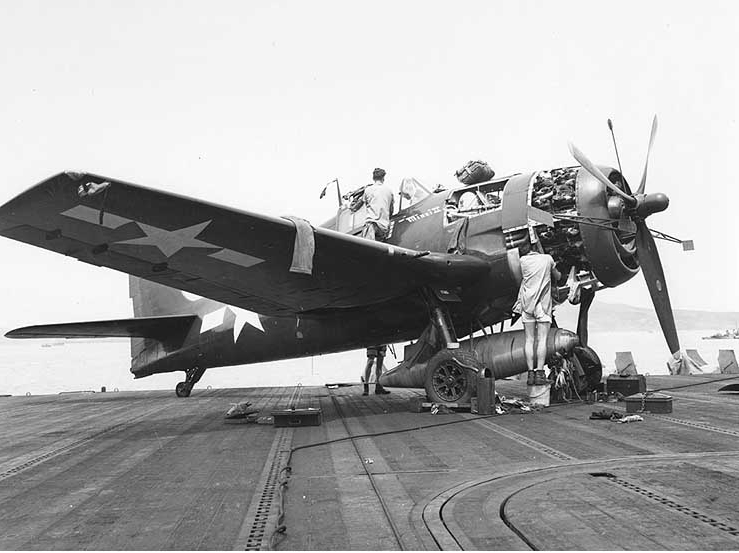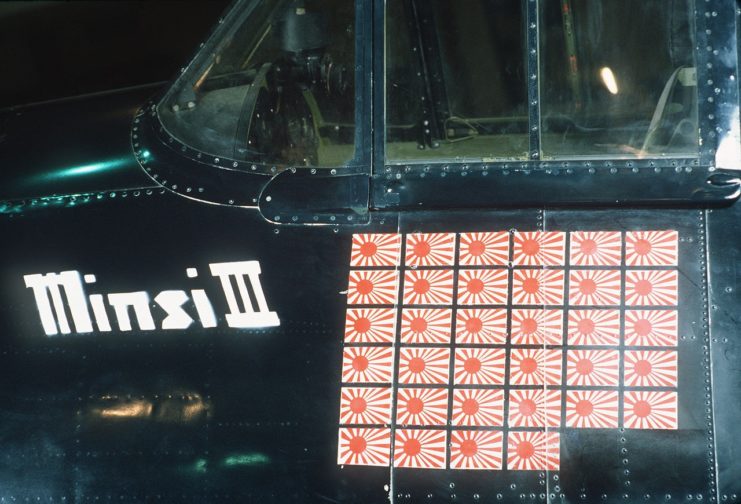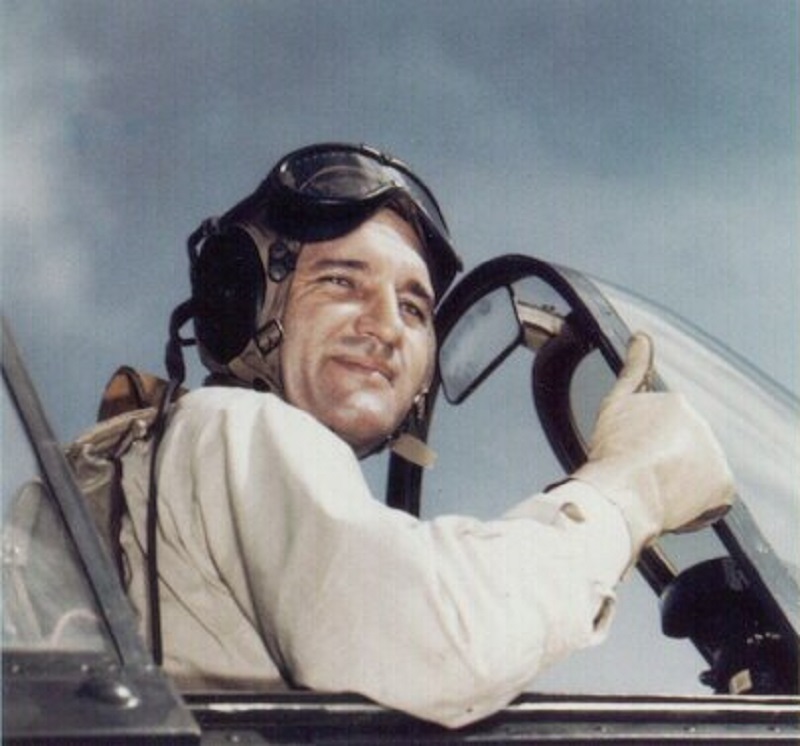David McCampbell was an American WWII flying ace who holds a number of impressive achievements. Not only is he the top F6F Hellcat ace, but he is also the US Navy’s highest-scoring ace and the highest-scoring American ace to survive the war. He finished the war with a total of 34 kills and a Medal of Honor.
Early life
McCampbell was born in Bessemer, Alabama on January 16, 1910, but was raised in Florida. Before attending the United States Naval Academy in 1929, McCampbell had already been through the Staunton Military Academy and the Georgia School of Technology.
He graduated from the Naval Academy in 1933 with a degree in marine engineering, but unfortunately, this was the peak of the Great Depression and McCampbell was honorably discharged from the Navy. The following year though the Navy wanted him back and gave him a position on the USS Portland, a heavy cruiser. He stayed in Portland until mid-1947 when he transferred to Naval Air Station Pensacola for pilot training.
He received his wings in April 1938 and was stationed on the aircraft carrier USS Ranger.
From signal officer to fighter ace

This plane is “Minsi II,” belonging to the Essex Air Group Commander, Commander David McCampbell. (Photo Credit: USN. Official U.S. Navy Photograph / National Archives collection / Public Domain)
McCampbell started WWII as a landing signal officer aboard the USS Wasp, which was sunk in 1942. He survived the sinking, received a promotion to Lieutenant Commander, and was sent back to the US to train upcoming landing signal officers for the next year.
In September 1943 he was given command of his own squadron (VF-15) and then in February 1944 was made the Commander of Air Group 15 (CAG-15). Throughout 1944 McCampbell and his men operated from the USS Essex aircraft carrier and flew 20,000 hours of combat missions.
During this time McCampbell flew four different Grumman F6F Hellcats and racked up an impressive number of kills in them. He became an “ace in a day” when he shot down five Japanese Judy dive bombers at the Battle of the Philippine Sea, which pilots nicknamed the “Marianas Turkey Shoot.” McCampbell flew a second mission later that day and claimed another two Japanese aircraft, this time Zeros.
McCampbell’s CAG-15 destroyed over 600 enemy aircraft during the war (around half of which were in the air), more than any other air group in the Pacific. In addition, they sank more ships than any other air group in the Pacific.
A few months after the Marianas Turkey Shoot, McCampbell participated in the Battle of Leyte Gulf in the Philippines where he simultaneously became the only US airman to become an “ace in a day” twice and scored the highest number of kills on a single mission by any American pilot.

This happened on October 24, 1944. McCampbell and his wingman engaged 60 Japanese aircraft, with McCampbell shooting down seven Zeros and two Oscars for a total of nine enemy aircraft on a single mission.
After this intense dogfight McCampbell was running on fumes and had to make an emergency landing on the USS Langley as the deck of the Essex was not clear. After landing his aircraft was found to only have two rounds of ammunition left and had to be manually moved along the flight deck as it was completely out of fuel.
For his incredible display of airmanship and bravery on his “ace in a day” missions McCampbell was awarded the Medal of Honor.
His Medal of Honor citation states that “His great personal valor and indomitable spirit of aggression under extremely perilous combat conditions reflect the highest credit upon Commander McCampbell and the United States Naval Service.”
Later life
The end of the war was certainly not the end of McCampbell’s military career. After the war ended McCampbell served as the Chief of Staff to the Commander Fleet Air at NAS Norfolk, Virginia for two years. After this, he worked as the Senior Naval Aviation Advisor for Argentina before becoming the executive officer aboard USS Franklin D. Roosevelt during the Korean War.
After Korea, he worked as the Planning Officer on the Staff of Commander Aircraft Atlantic for a year and served as the Commanding Officer, Naval Air Technical Training Center Jacksonville at NAS Jacksonville, Florida, from July 1953 to July 1954. He then became the commander of the fleet oiler USS Severn and then the aircraft carrier USS Bon Homme Richard.
He ended his career at the Pentagon as the Assistant Deputy Chief of Staff for Operations to the Commander in Chief, Continental Air Defense Command, retiring in 1964.
The legendary American pilot and hero passed away in 1996 after a long illness. He is buried at the Arlington National Cemetery.
